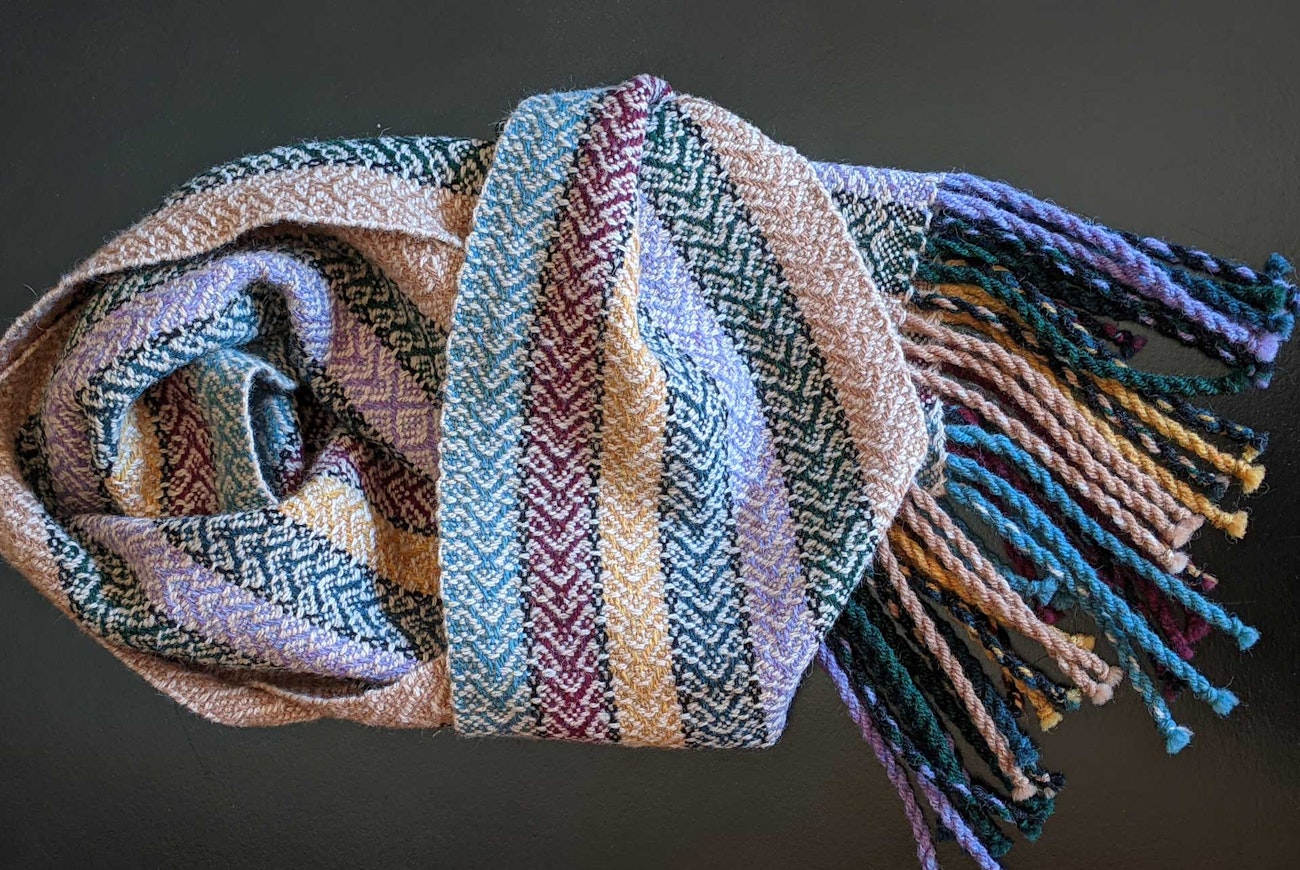I just got back from vacationing in the Northwest. My adventure included ferries and cars, but it reminded me of this other type of voyage taken by some intrepid young women and written about by Anne Elixhauser. She wove sashes for each of these adventuresome canoeists! `~Susan
In May 2021, a young woman named Macy Cunningham commissioned me to create voyageur sashes for a canoe trip she was planning. This wasn’t a simple day trip but rather a 40-day journey for seven women through the Arctic National Wildlife Refuge, beginning on the summer solstice. If “sash” makes you think of Miss America, think again. These sashes are patterned after those worn by French Canadian fur traders in the 18th and 19th centuries. The voyageur sashes I wove with a friend were warm, woolen scarves.
The women’s tradition of voyageur scarves started with Camp Widjiwagan, their YMCA camp in Minnesota. The voyageur sash is a ritual at this camp: each voyageur group commissions the sashes, one for each paddler and one to leave at the camp. In this case, Macy and her friends needed eight sashes—seven for the trip and one for the camp. I began the planning process with Macy. We had each woman choose a color for one of seven warp stripes. Historically, these sashes often featured arrow motifs, so that would be our pattern as well. I had recently woven samples using Harrisville Shetland wool, so I knew its sett and shrinkage. Destiny was at work here.
I based my draft on #97 from Strickler’s A Weaver’s Book of 8-Shaft Patterns and added three black warp ends between each color stripe to make them more vibrant. A simple straight-draw treadling created the arrow pattern Macy was after. To complete the eight scarves on time, I enlisted a weaving friend, Rissa Karpoff. When the yarn arrived, I wound the warps and we both began weaving, consulting one another on beat and tension to get eight identical scarves. Rissa and I coordinated by text, photos, and sharing measurements, and in the end, we could not tell the scarves apart when we got together to do the wet-finishing.

Between weaving sessions, I read more about the sashes. The voyageur sashes, or ceinture fléchée (literally, “arrow belt”), were made of wool and worn by fur traders to serve many purposes: to tie around for warmth, for support to prevent hernias when lifting several 90-pound bundles of furs, to sling around their foreheads as tumplines to carry heavy loads on their backs, to tie around their pant legs to keep dry, to store a knife or flint steel in the absence of pockets, and even to splint an injured leg. When a single thread was needed, it was pulled from the fringe. In a world with few and hard-earned possessions, something that served multiple purposes was especially prized.
Macy asked us to incorporate the stars of the Big Dipper and Polaris in each scarf to reflect the Alaskan flag. Following the tradition of Indigenous peoples who added beads to their sashes, we sewed a bead star onto each scarf, labeled with the star’s name. The eighth scarf that remained at camp was Polaris to guide the young voyageurs home after their trek through the Alaskan wilderness.
The scarves serve the canoeists as souvenirs of their amazing summer adventure. Later I wove one for myself as a reminder of these strong, capable, and intrepid women.
ANNE ELIXHAUSER is a retired research scientist, mom, half of Turnandweave.com, and member of the Weavers Guild of Greater Baltimore.

